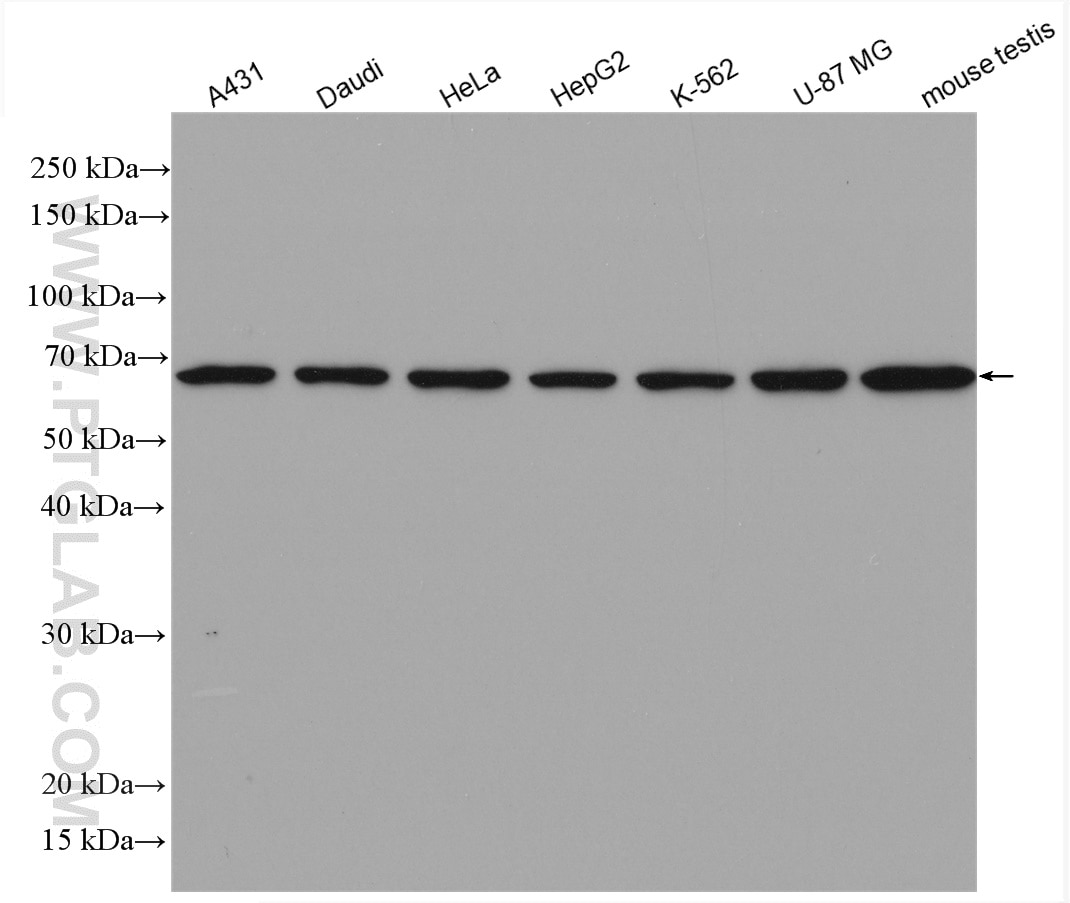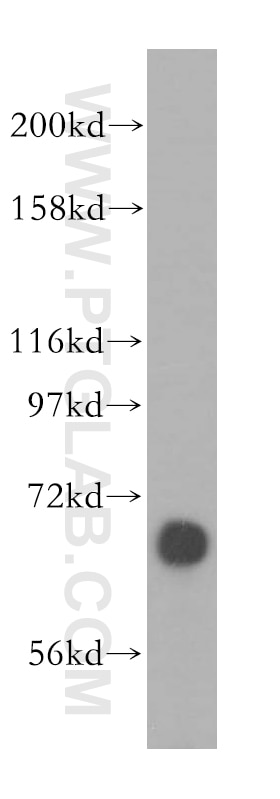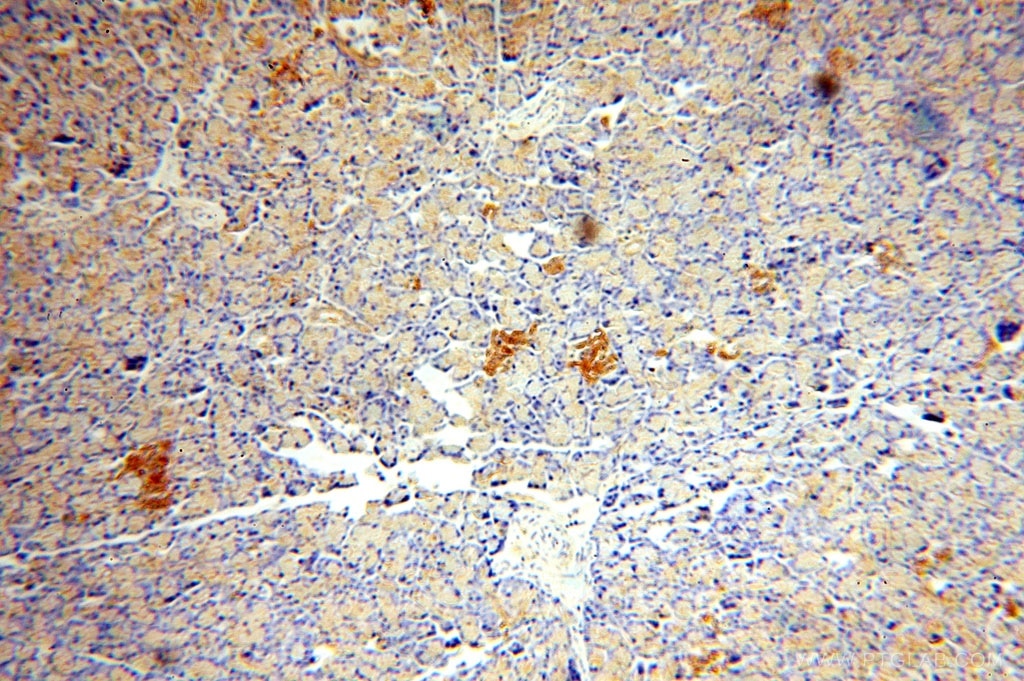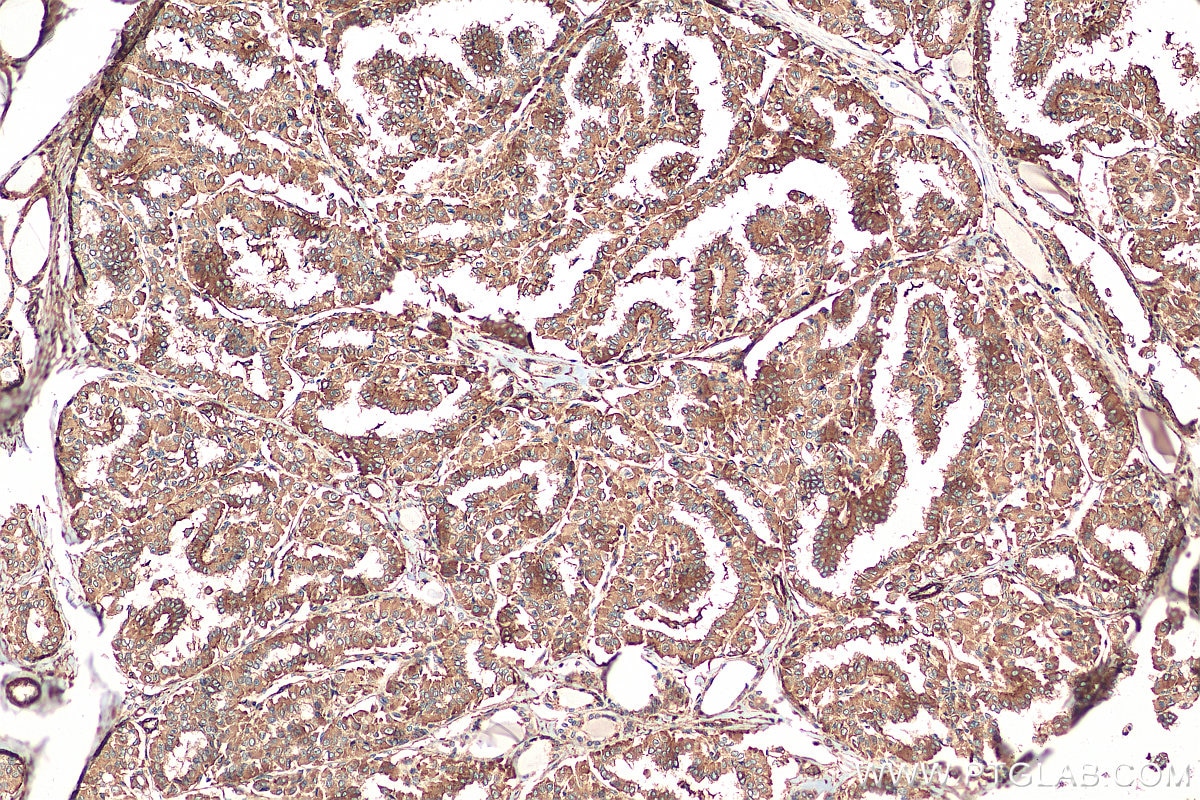- Phare
- Validé par KD/KO
Anticorps Polyclonal de lapin anti-ATP6V1A
ATP6V1A Polyclonal Antibody for WB, IP, IHC, ELISA
Hôte / Isotype
Lapin / IgG
Réactivité testée
Humain, rat, souris et plus (2)
Applications
WB, IP, IF, IHC, ELISA
Conjugaison
Non conjugué
N° de cat : 17115-1-AP
Synonymes
Galerie de données de validation
Applications testées
| Résultats positifs en WB | cellules A431, cellules Daudi, cellules HeLa, cellules HepG2, cellules K-562, cellules MG U-87, tissu placentaire humain, tissu rénal de souris, tissu testiculaire de rat, tissu testiculaire de souris |
| Résultats positifs en IP | cellules HeLa |
| Résultats positifs en IHC | tissu pancréatique humain, tissu de cancer de la thyroïde humain il est suggéré de démasquer l'antigène avec un tampon de TE buffer pH 9.0; (*) À défaut, 'le démasquage de l'antigène peut être 'effectué avec un tampon citrate pH 6,0. |
Dilution recommandée
| Application | Dilution |
|---|---|
| Western Blot (WB) | WB : 1:2000-1:16000 |
| Immunoprécipitation (IP) | IP : 0.5-4.0 ug for 1.0-3.0 mg of total protein lysate |
| Immunohistochimie (IHC) | IHC : 1:20-1:200 |
| It is recommended that this reagent should be titrated in each testing system to obtain optimal results. | |
| Sample-dependent, check data in validation data gallery | |
Applications publiées
| KD/KO | See 1 publications below |
| WB | See 23 publications below |
| IHC | See 1 publications below |
| IF | See 10 publications below |
| IP | See 2 publications below |
Informations sur le produit
17115-1-AP cible ATP6V1A dans les applications de WB, IP, IF, IHC, ELISA et montre une réactivité avec des échantillons Humain, rat, souris
| Réactivité | Humain, rat, souris |
| Réactivité citée | rat, Humain, poisson-zèbre, porc, souris |
| Hôte / Isotype | Lapin / IgG |
| Clonalité | Polyclonal |
| Type | Anticorps |
| Immunogène | ATP6V1A Protéine recombinante Ag10801 |
| Nom complet | ATPase, H+ transporting, lysosomal 70kDa, V1 subunit A |
| Masse moléculaire calculée | 617 aa, 68 kDa |
| Poids moléculaire observé | 68 kDa |
| Numéro d’acquisition GenBank | BC013138 |
| Symbole du gène | ATP6V1A |
| Identification du gène (NCBI) | 523 |
| Conjugaison | Non conjugué |
| Forme | Liquide |
| Méthode de purification | Purification par affinité contre l'antigène |
| Tampon de stockage | PBS avec azoture de sodium à 0,02 % et glycérol à 50 % pH 7,3 |
| Conditions de stockage | Stocker à -20°C. Stable pendant un an après l'expédition. L'aliquotage n'est pas nécessaire pour le stockage à -20oC Les 20ul contiennent 0,1% de BSA. |
Informations générales
The vacuolar-type H(+)-ATPase (V-ATPase) is responsible for the acidification of endosomes, lysosomes, and other intracellular organelles. It is also involved in hydrogen ion transport across the plasma membrane into the extracellular space. The V-ATPase is a multisubunit complex with cytosolic and transmembrane domains. The cytosolic catalytic domain consists of 3 A subunits and 3 B subunits, which bind and hydrolyze ATP, as well as regulatory accessory subunits.ATP6V1A is V-type proton ATPase catalytic subunit A.
Protocole
| Product Specific Protocols | |
|---|---|
| WB protocol for ATP6V1A antibody 17115-1-AP | Download protocol |
| IHC protocol for ATP6V1A antibody 17115-1-AP | Download protocol |
| IP protocol for ATP6V1A antibody 17115-1-AP | Download protocol |
| Standard Protocols | |
|---|---|
| Click here to view our Standard Protocols |
Publications
| Species | Application | Title |
|---|---|---|
Nat Immunol Heme drives hemolysis-induced susceptibility to infection via disruption of phagocyte functions. | ||
Nat Microbiol The interferon-inducible isoform of NCOA7 inhibits endosome-mediated viral entry. | ||
Autophagy Follicular lymphoma-associated mutations in the V-ATPase chaperone VMA21 activate autophagy creating a targetable dependency | ||
Mol Psychiatry Sphingomyelin-induced inhibition of the plasma membrane calcium ATPase causes neurodegeneration in type A Niemann-Pick disease. | ||











